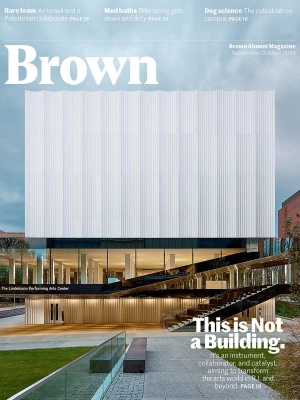Demystifying the Endowment
A letter from the President
President Christina H. Paxson invites Jane Dietze, Brown’s Vice President and Chief Investment Officer, to share insights on Brown’s endowment during times of unrest.
Social issues often raise questions about the role of finances in societal challenges. Across decades, we have seen that times of geopolitical unrest lead to increased interest in how universities invest their endowments.
I have seen that more today than in all my 12 years working in the endowment world in higher education. There are ongoing local and global questions about the role of institutional investing in fossil fuels, gun violence, and the conflict in the Middle East. In my conversations with students, faculty, staff, and alumni, it’s clear that these questions are intertwined with deeply held values and beliefs that are playing a role in activism on campus and beyond.
What emerges is a set of common misperceptions about our endowment. As Brown’s chief investment officer, I can help ensure that important discussions in our community are informed by a fact-based understanding. Earlier this year, I participated in a Q&A about the endowment, divestment, and ethical investing (see URL below). I hope you will read it, as this column will touch only briefly on those issues.
The goal of Brown’s endowment is to support financially the educational mission of the University in perpetuity by preserving and prudently growing the value of the endowment. A common misconception is that the endowment is a piggy bank that Brown can readily access to address any financial challenge it confronts. Rather, the endowment is a collection of almost 4,000 individual funds originated by donors who gave money to be spent on a specified purpose—i.e. scholarships or Alzheimer’s research—and these designated purposes are codified in legal contracts.
The various funds comprising the endowment are pooled and invested in a diversified portfolio of financial assets, and a portion of the investment return on each gift is distributed to the University’s budget for the designated purpose. The Corporation of Brown University decides how much of the endowment to spend per year, and that “payout rate” is currently about 5 percent. The higher the rate, the slower the endowment grows, which can mean—over time—tens of millions of dollars less to spend each year on financial aid, research, and everything else the endowment supports.
Other misconceptions are that all donations make their way to the endowment, or that student tuition and fees go into the endowment. Neither is true. Endowments are established through agreements with donors of large gifts who want the funds to generate investment returns across generations.
The complexity of financial markets has increased in recent decades, and directly investing capital requires teams with unique skills. Rather than investing directly, the Brown Investment Office seeks out specialist investment managers who have a track record of exceptional performance in areas such as artificial intelligence or public biotechnology companies. The majority of Brown’s endowment, 96 percent, is invested with these third-party managers. The 4 percent we directly invest—the stocks you see in our 13F SEC filing—include some index funds, some healthcare companies, and some financial services companies.
While we are often asked to share details of the investments handled by external managers, we are contractually prohibited from disclosing their identities or portfolios. For a manager, the content of their portfolio is their intellectual property. If someone else knows what they are buying, their business could be impaired. My team monitors investment strategies carefully, but in hiring managers, we give them discretion to invest. We do extensive due diligence with a commitment to choosing managers who invest with ethics and integrity, and we do not select strategies that seek to profit from social harm.
Other common questions include who makes decisions about divestment; the history of divestment actions at Brown; and how Brown considers ESG principles. I hope you will visit the online Brown Q&A below for answers. Our annual financial reports also include detailed discussions of our portfolio and investment results. I and other Investment Office staff are committed to helping our community build understanding of Brown’s endowment at this time of heightened interest.
Read the Q&A at brown.edu/news/2024-04-19/dietze
Read the September–October President’s Spread on the “Making Sense of AI” here (PDF).





